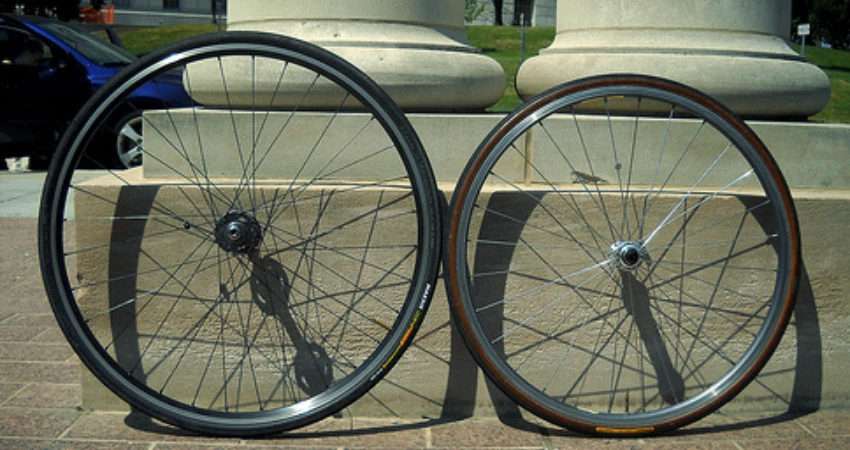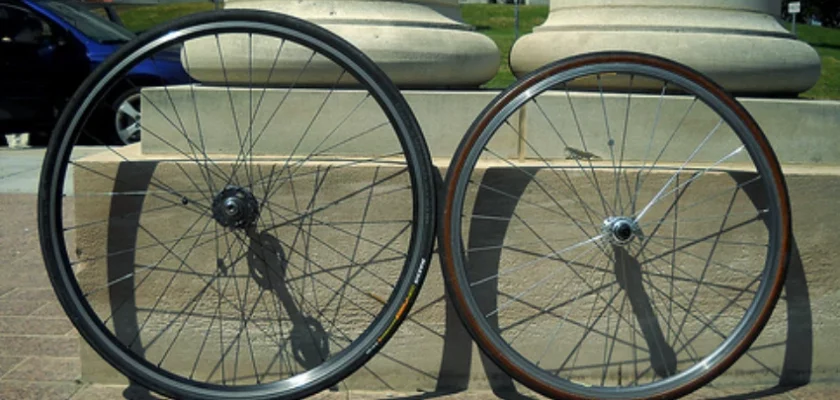Have you ever wondered if you can put 700c wheels on a 26-inch bike? Well, wonder no more! In this article, we will dive into the world of wheel sizes and explore whether it is possible to make this swap.
Whether you are a cyclist looking to upgrade your current setup or just curious about the compatibility of different wheel sizes, we’ve got you covered.
So, can I put 700c wheels on a 26-inch bike? The short answer is no, but let’s explore the reasons behind this and understand the intricacies of wheel sizes.
Join us as we unravel the mystery behind this common question and delve into the factors that determine the compatibility of different wheel sizes. Strap in, because we’re about to embark on a journey through the world of bike mechanics!
Can I Put 700c Wheels on a 26 Inch Bike?

The short answer is, it can be done with some modifications, but there are a few considerations and challenges involved.
Understanding Wheel Size Measurements
Before diving into the feasibility of putting 700c wheels on a 26-inch bike, let’s first clarify what these measurements mean. The wheel size of a bicycle is determined by the diameter of the wheel, which is measured in inches or millimeters. Here’s a breakdown of the different wheel sizes commonly used:
– 26-inch wheels: These wheels have a diameter of approximately 559mm. They have long been the standard size for mountain bikes and are still widely used today.
– 700c wheels: These wheels have a diameter of approximately 622mm. They are commonly found on road bikes and provide a smoother and more efficient riding experience on paved roads.
Can You Physically Fit 700c Wheels onto a 26-inch Bike?
In theory, it is possible to use 700c wheels on a 26-inch bike frame, but there are a few considerations to keep in mind:
1. Frame Clearance: The most crucial factor to consider is the frame clearance. Since the diameter of a 700c wheel is larger, it may not fit properly within the frame designed for a 26-inch wheel.
The frame needs to have enough space between the fork and seatstays to accommodate the larger wheel diameter.
2. Brake Reach: Another important consideration is the brake reach. Most 26-inch bikes use cantilever or V-brakes, which are designed to work with the smaller 26-inch wheels.
If you mount 700c wheels on a frame designed for 26-inch wheels, the brakes may not reach the rim’s braking surface properly. This can compromise your safety and braking performance.
3. Fork Compatibility: If your bike has a suspension fork, it’s crucial to ensure that it is compatible with the larger diameter of 700c wheels.
Some suspension forks may not have enough clearance for the change in wheel size, which can lead to the wheel rubbing against the fork during riding.
Modifications and Considerations
To successfully put 700c wheels on a 26-inch bike, you may need to make several modifications:
1. Frame and Fork: If your frame and fork have enough clearance, you’re off to a good start. However, if not, you may need to consider upgrading the frame and fork to ones that are compatible with 700c wheels.
This can be a costly modification, so it’s important to assess whether it’s worth the investment based on the condition and value of your current bike.
2. Brake System: As mentioned earlier, the brake reach is a crucial factor to consider. You may need to upgrade your brake system to ensure compatibility with the larger wheel size.
This could involve installing long-reach brakes or changing to a different brake type that can accommodate the larger diameter.
3. Tire Selection: With 700c wheels, there are a wide variety of tire options available compared to 26-inch wheels. You’ll have the opportunity to choose tires that suit your riding style, such as those designed for road, touring, or gravel riding. However, be cautious of tire width compatibility with your frame and fork.
4. Gearing Adjustments: Swapping to larger wheels can affect your bike’s overall gearing. The larger circumference of 700c wheels will cause your bike to travel a longer distance with each pedal stroke.
Therefore, it’s important to adjust your bike’s gearing to compensate for the change in wheel size. This can be done by changing the cassette at the rear or the chainrings at the front, depending on your bike’s drivetrain.
Is It Worth It?
Now that you understand the modifications and considerations involved in putting 700c wheels on a 26-inch bike, it’s important to assess whether it’s worth making this change. Here are a few factors to consider:
– Cost: Upgrading your frame, fork, brake system, and potentially other components can be a significant investment. Before proceeding, calculate the total cost to determine if it aligns with your budget and the overall value of your current bike.
– Purpose: Think about the purpose for which you’re making this change. If you primarily ride on rough trails and off-road terrains, sticking with 26-inch wheels may be more appropriate. On the other hand, if you’re looking to improve your road or touring performance, switching to 700c wheels can offer a smoother and faster ride.
– Trade-offs: Keep in mind that modifying your bike’s wheel size can have trade-offs. While 700c wheels can offer benefits in terms of speed and efficiency on paved surfaces, they might not be as ideal for handling tough terrains. Evaluate the pros and cons carefully before making a decision.
Consult a Professional
If you’re unsure about the compatibility of 700c wheels on your 26-inch bike, or if you lack the technical expertise to make the necessary modifications, it’s always a good idea to consult a professional bicycle mechanic. They can assess the feasibility of the swap, guide you through the necessary modifications, and ensure your safety and performance on the bike.
Frequently Asked Questions
Can I put 700c wheels on a 26 inch bike?
Yes, you can put 700c wheels on a 26 inch bike, but it may require modifications. The frame and brakes need to be compatible, and you may need to adjust the bike’s geometry and tire clearance. Consider consulting a professional before attempting this conversion.
What changes do I need to make to put 700c wheels on my 26 inch bike?
To fit 700c wheels on a 26 inch bike, you might need to change the brakes, adjust the frame for proper tire clearance, and possibly modify the bike’s geometry. It’s best to consult a bike mechanic or do thorough research to ensure a successful conversion.
What are the advantages of putting 700c wheels on a 26 inch bike?
Switching to 700c wheels can offer advantages such as increased speed and improved efficiency. The larger diameter leads to better rolling over obstacles and a smoother ride. Additionally, a wider variety of tire options is available for 700c wheels compared to 26 inch wheels.
Are there any downsides to putting 700c wheels on a 26 inch bike?
One possible downside is that changing wheel size affects the bike’s geometry. This alteration can impact handling characteristics and the overall feel of the bike. Moreover, the conversion may require additional expenses for new components and adjustments.
Can I convert back to 26 inch wheels after installing 700c wheels on my bike?
Yes, it’s possible to convert back to 26 inch wheels after installing 700c wheels. You would need to reverse the modifications made during the conversion. However, keep in mind that this process might require additional adjustments and expenses.
Final Thoughts
In conclusion, it is not recommended to put 700c wheels on a 26-inch bike. The difference in wheel sizes can lead to various compatibility issues, affecting the bike’s performance and safety.
While it may be tempting to try and modify your bike, it is crucial to prioritize compatibility and adhere to the manufacturer’s recommendations.
Modifying the wheel size can throw off the bike’s geometry, affecting handling and potentially causing accidents. So, if you own a 26-inch bike, it is best to stick with wheels of the same size for an optimal riding experience.

